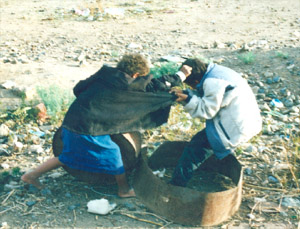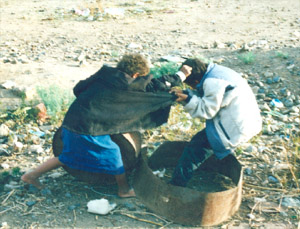
Doves vs Hawks [Archives:2001/47/Culture]
November 19 2001
Yasin al-Zikri

In the last quarter of the day from December to February, a time before the cultivation of the land, a selected group of players is split into two groups; doves (5-10) and hawks (3-5). Two circles are drawn in two corners of a wide leveled field. One is used as the dove cove and the other is the hawks’ nest. As the doves go out of their cove, members of the hawks’ team try to catch as many ‘victims’ as possible and drag them to their nest, which is also used as a prison for the captured ‘birds.’ Then comes the rest of the doves members’ turn to try their best to free their friends. They have to be very fast and smart, or else they can be caught. To free their feathered friend they have to touch their hands.
The above scenario shows that the game implicates high valued lessons such as the right to be free. The game seems to promote love for freedom and sacrificing for the freedom of others. The plans doves make together to free their friends is a significant factor which reinforces the importance of teamwork.
However, such conclusions always bring me other speculations. For example, we can say that the game is designed to practice running and undertaking risky missions. The good values the game is meant to develop shows how advanced the game is. It is played by children between 10-14 years old. There are other games which are played by younger children. These also have their own goals. For example, there are games intended to develop players’ hearing and sights.
——
[archive-e:47-v:2001-y:2001-d:2001-11-19-p:./2001/iss47/culture.htm]


